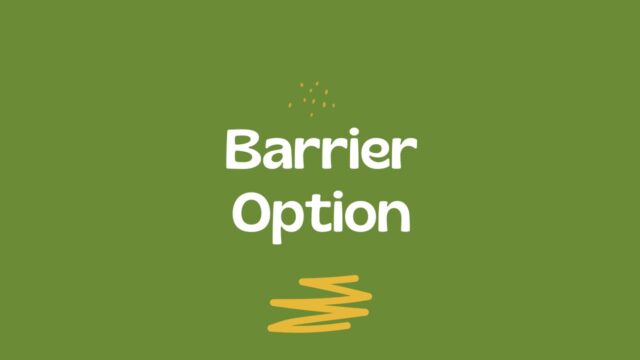
What is a Barrier Option
A barrier option is a type of derivative whose payoff depends on whether or not the price of the underlying asset crosses a certain barrier level. If the price does cross the barrier, then the option is said to be “knocked out” and expires worthless. If the price never crosses the barrier, then the option behaves like a usual call or put option and pays off accordingly. Barrier options are often used by investors who want to protect themselves against sudden market movements, or who want to speculate on such movements. Because of their relative complexity, barrier options are typically only traded by experienced investors.
How does a Barrier Option work
Barrier options are popular among traders because they offer limited risk and potential for large profits. For example, consider a call option with a strike price of $50 that expires in one month. If the stock price is currently $48, then the option is out-of-the-money and will expire worthless. However, if the stock price increases to $52, then the option is in-the-money and can be exercised for a profit. Because barrier options only require the asset’s price to cross the strike price, they offer a lower cost of entry than traditional options. As a result, barrier options are often used as a way to speculate on market movements without incurring too much risk.
Advantages of using a Barrier Option
A barrier option is an exotic options contract that involves the purchase or sale of an asset at a specific price known as the “barrier.” The barrier can be either a price ceiling or floor, and the option expires if and when the underlying asset ever trades at or through the barrier. Barrier options offer investors several advantages over traditional options contracts. First, they provide investors with greater flexibility in terms of tailoring contracts to meet their specific investment objectives. Second, barrier options are often less expensive than traditional options contracts. Third, barrier options offer greater downside protection than traditional options contracts. Finally, barrier options can be used to construct synthetically short or long positions in the underlying asset.
Disadvantages of using a Barrier Option
A barrier option is a type of derivative that gives the holder the right to buy or sell an underlying asset at a predetermined price. Barrier options are often used to hedge against potential losses, as they provide protection against large swings in the market. However, there are also some significant disadvantages to using barrier options. First, barrier options are often more expensive than other types of derivatives, as they require a higher premium to protect against potential losses. Second, if the market does not move in the anticipated direction, the barrier option will not provide any protection. Finally, barrier options can be complex and difficult to understand, which may make them unsuitable for some investors.
When is it best to use a Barrier Option
Barrier options are often used in conjunction with other types of options contracts, such as vanilla options or call and put options. They can also be purchased as standalone products. The advantage of barrier options is that they offer protection against extreme market movements. However, they also come with a number of risks, including the risk of being “stuck” in an losing position if the market does not move in the expected direction. As with all investment products, it is important to carefully consider your objectives before investing in barrier options.
Who should use a Barrier Option
Barrier options are a type of financial derivative that can be used to protect an investment from adverse price movements. They are often used by hedgers to limit their downside risk, and by speculators to take advantage of an expected price move. barrier options can be either knock-out or reverse knock-out. A knock-out option is one that becomes void if the underlying asset price reaches a certain level, known as the barrier. A reverse knock-out option is one that only comes into existence if the asset price reaches the barrier. There are various other types of barrier option, but these are the two most common.


































